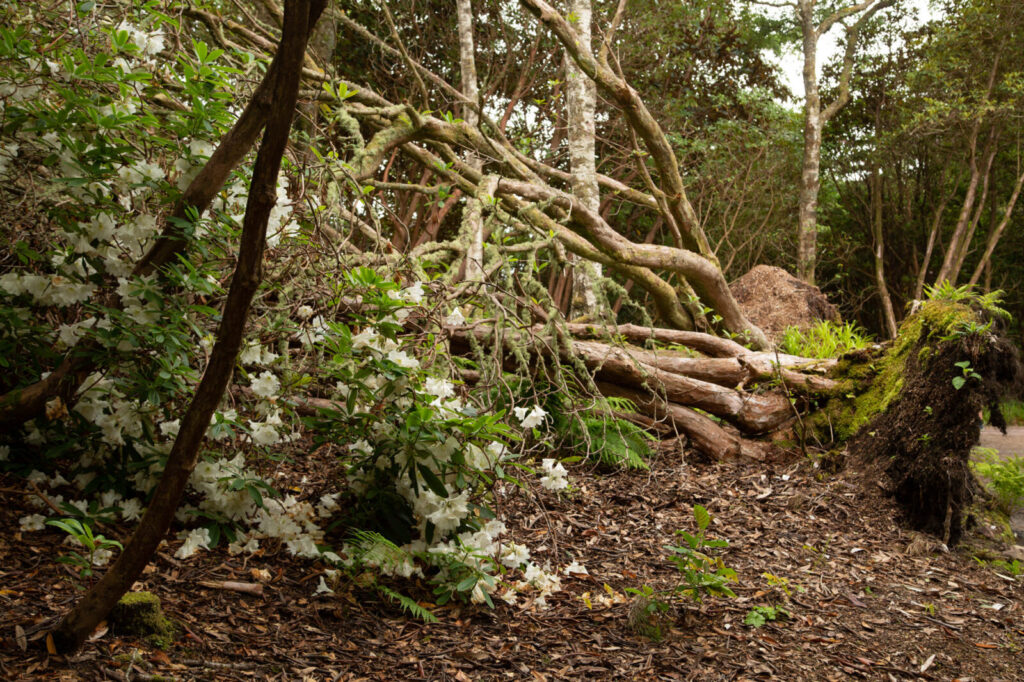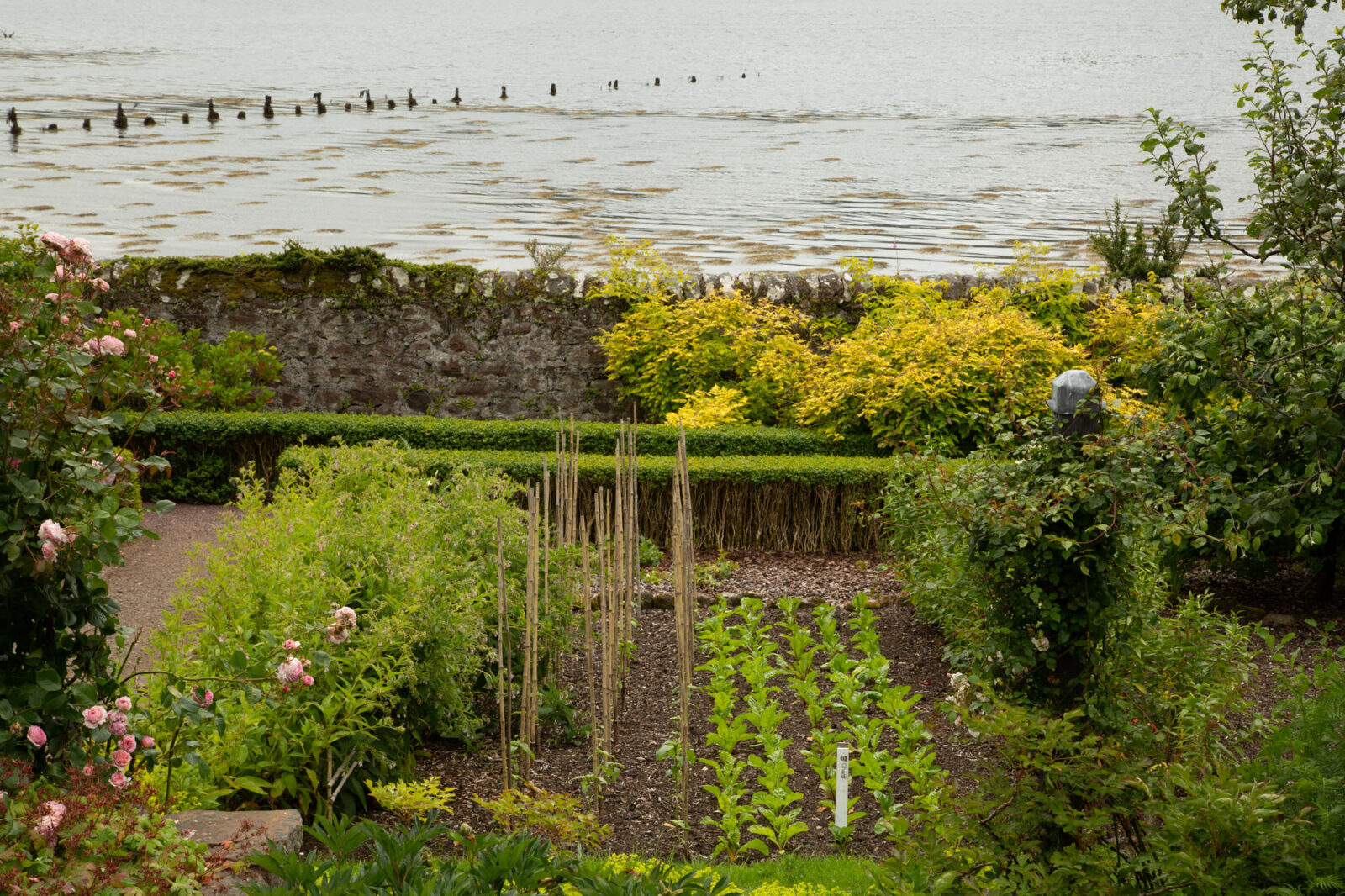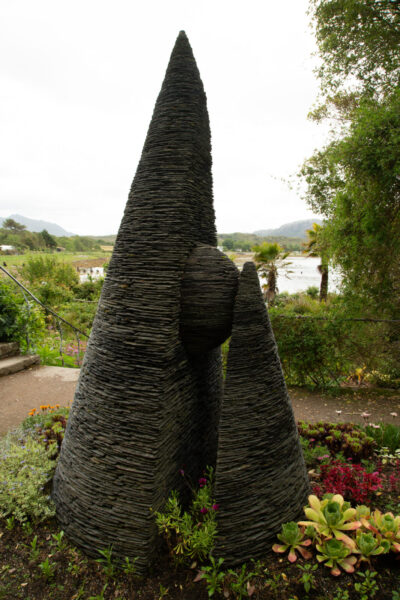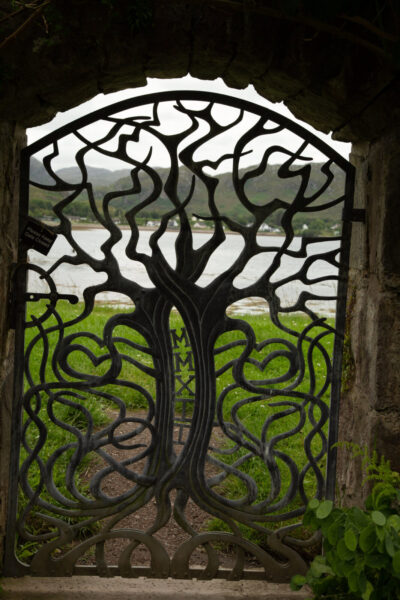It was the one decent afternoon on what was otherwise a very rainy, windy, and stormy mountain walking and trekking trip to Wester Ross and Skye – while the rest of the country was basking in warm sunny summer weather. But a visit to Inverewe Gardens on the shores of Loch Ewe was always going to be a highlight of the trip, and the weather obliged. Inverewe Gardens really are in one of the most unlikely spots imaginable. Less than 100 miles from Cape Wrath on a latitude of 57.8N they are closer to the Arctic Circle than St Petersberg, and on one of the most windswept coastlines in the world. In 1863 when Osgood Mackenzie acquired the promontory along with 12,000 acres of farms, crofts and their tenants, and a huge area of impoverished heathland and bog, it didn’t look like much of a prospect for a sub-tropical garden. But Osgood didn’t see it like that. He had done the European ‘Grand Tour’ and witnessed the Italianate terraced garden style. Why not in Wester Ross? He also wanted a baronial mansion ‘built in local stone with typically whimsical turrets and gables in the Highland style’ as it present owners the National Trust for Scotland put it. And woodland and garden to match. By 1870 he had established a productive walled garden to raise fruit vegetables and flowers, achieved by excavating and terracing a raised beach beside the sea. But the windswept nature of the site meant a woodland shelter-belt for the rest of the site was a must, and he set about planting over 100 acres of woodland, using mainly native Scandinavian Scots pine, but also any other trees he could lay his hands on, including birch, rowan, oak, beech, larch, alder and Corsican and Austrian pine. By 1880 the dogged determination (and cash) had paid off and by 1883 a visitor wrote to The Times praising both the walled garden and ‘the newly planted hanging woods’. Inverewe became his lifetimes work and by the time of his death in 1922 had become internationally acclaimed, with plants from all over the temperate world, northern and southern hemispheres, taking advantage both of the warming effects of the Gulf Stream on the Wester Ross coastline, and the micro-climate created by that woodland shelter-belt.
One hundred years later the garden is a joy, visited by thousands of visitors every year. Indeed its five millionth visitor is expected to pass through the entrance gate sometime this year. First impressions are of its setting. On a large sea loch the surrounding area is still pretty wild, even if the nearby village of Poolewe is larger and more commercial than 100 years ago. The loch, the promontory, and the views towards the lofty peaks of Torridon are a spectacular context in which the walled garden, the first element of the estate the visitor encounters, nestles. Neat rows of flowers and vegetables, and cordon apple trees trained along the walls are testament to Osgoods original vision, and located with a southern facing parabolic aspect, in the sunniest part of Inverewe. Less expected are the artworks carefully inserted into this intimate space; James Parker’s 2014 piece Sheltered existence or the wrought iron doors set into stone arches with paths leading down from the garden to the shoreline a few metres away. Coming up through the rockery – again almost on the shoreline and subject to salt spray from frequent winter gales ‘an extremely defiant coastal statement’ as the interpretation board puts it, the ‘big house’ looms – though nothing like the one Osgood had imagined. That was burned to the ground in 1914 and its much less ambitious replacement by his daughter Mairi Sawyer only completed in 1937. Mairi was key to keeping the spirit of Inverewe alive, and after the death of her husband in 1945, kept the garden going alone during the labour shortages of the post War 1940s, before handing it over to the National Trust for Scotland in 1952.

It is easy to get lost in the Big Trees that surround the house to the north and west, a huge calming space that leads out onto Am Ploc Ard, the High Bluff, and eventually the Devils Elbow and the Cuddy Rock promontory. But nature has intervened. Much of the further parts of the gardens are now inaccessible, thanks to Storm Corrie which tore through the gardens on 29 January this year. Huge trees have been torn up, shattered, their roots pointing skywards, taking with them under-storey and bushes, blocking paths, ponds and watercourses, and turning a spectacular and unique natural environment into something akin to a clear-felled logging site. Not all is lost. Only one third of the garden area at most, was badly affected and the loss of trees allows other plants to grow and new life to colonise those newly-exposed root systems. Older trees were more vulnerable and some would have needed to come down for safety reasons in the next decade anyway. Nature can be brutal in its finality. But of course we all know that such storms are going to become more and more common, and their ferocity on probably already heat or drought-stressed (even in Wester Ross!) habitats, more severe in decades to come. Walking back along the Fictolacteum Walk and up by the Peace Plot (created by Osgood after the horrors of WWW1) in the evening sunlight, these reflections on loss and grief make both the vision of Osgood and Mairi, and the tenuous nature of our own existence all the more powerful.


